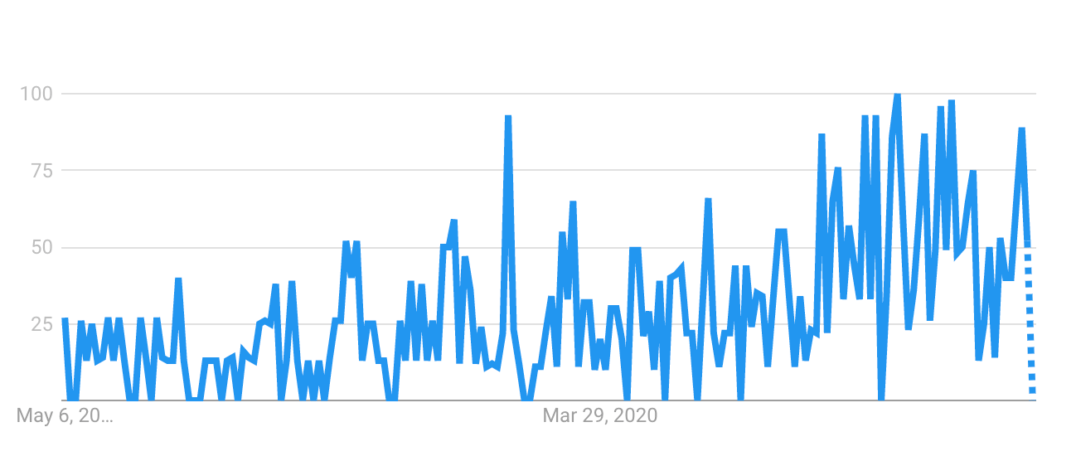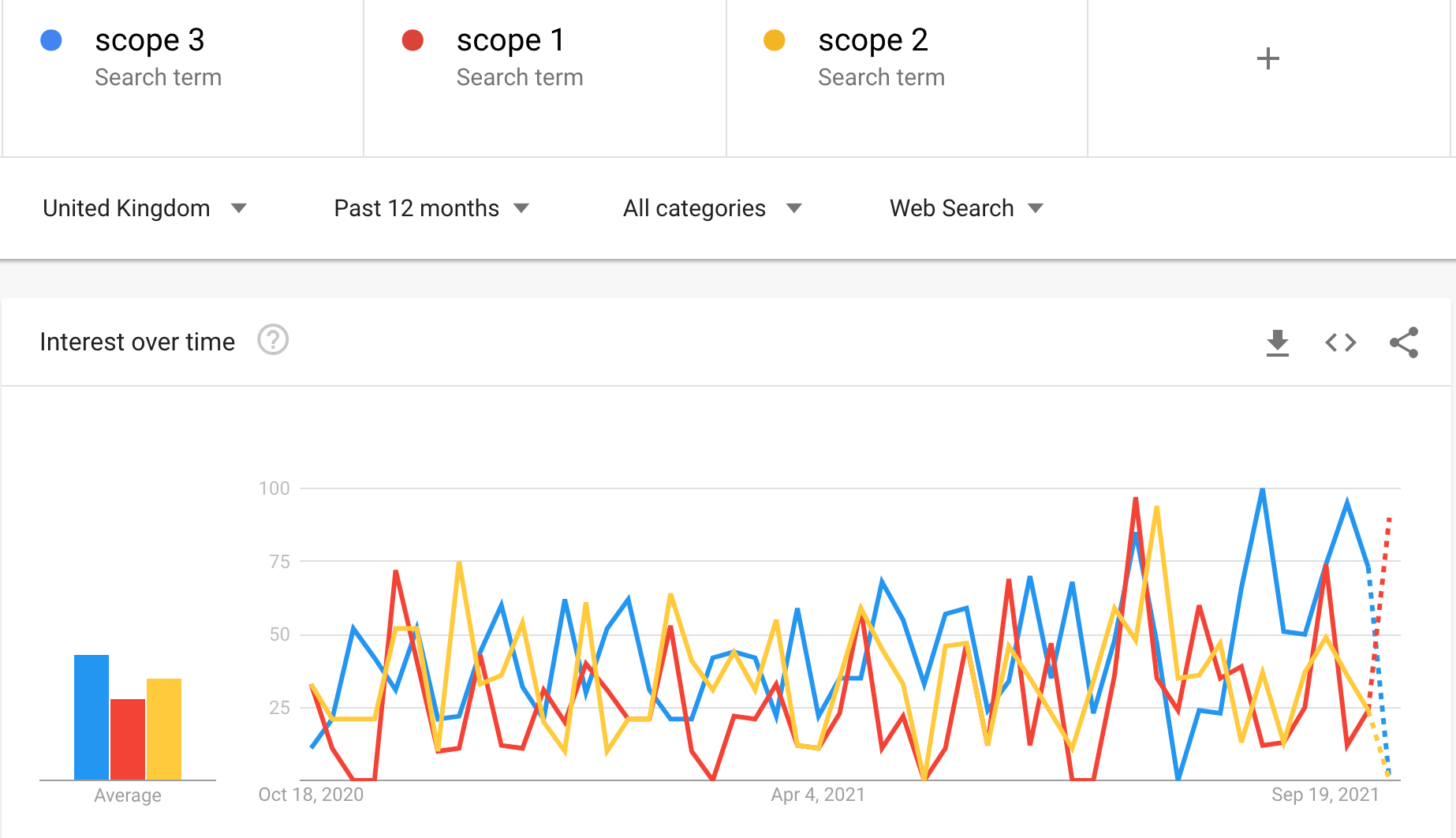This is part of our series on the power of procurement for driving sustainability.
Tackling pollution head on
The last few years have seen a massive uptake in businesses committing to a sustainability agenda. 90% of the largest 500 companies by market cap in the Russell index published sustainability reports in 2019.
The growth in sustainability-conscious corporates is being driven by a range of new trends:
- – Upcoming legislation such as the UK Environment Bill
- – Mandatory Climate Disclosures (which will require companies to report on GHG emissions)
- – November’s COP26 is creating a new sense of urgency
- – Increased litigation on climate and air pollution
- – Pressure from within the company from shareholders and even employees (for example Amazon employees who joined the climate strike)
- – Customer demand for sustainability – read our free report to dig into this trend further
The final frontier of sustainability
As we approach COP26 in Glasgow, the sustainability landscape is maturing. Businesses have been measuring their own impact for years and are now looking to understand and mitigate their broader impact within the value chain. Let’s dig in and understand what this might mean.
Businesses have focused heavily on Scope 1 and Scope 2 emissions. These are GHG emissions that can be directly attributed to business operations and energy consumption. Solutions to these are relatively simple, e.g. switching to renewable energy, improving efficiency in workplaces, and investing in low pollution fleets or machinery.
Scope 3 covers pollution that can be attributed to businesses but that is not directly a result of their activity. In short, the value chain and its impact. This could be the manufacturing of goods or their delivery through the logistics supply chain.
Over the last few months, we have noticed a specific interest in Scope 3 emissions. This is the most challenging aspect of businesses operations to tackle as they do not have direct control.
Sustainable Brands calls Scope 3 ‘The holy grail of walking our climate talk” and Megan Tatum at The Grocer, “the final frontier of carbon emissions” suggesting that “where companies are genuine about understanding their emissions, Scope 3 is where they should be looking”. So are businesses ready and what is the impact?
Businesses are announcing Scope 3 emission targets – reducing pollution from their supply chain and seeking to leverage the power of procurement
When in 2019, the Co-op shared a full breakdown of GHGs across its own business, it showed that 92% of its emissions could be classed as Scope 3. This points to the importance of ensuring Scope 3 is tackled and the enduring impact this can have within the economy.
This is why, in the build up to COP26, so many businesses have been announcing their Net Zero and Scope 3 targets. As Reuters reported, “companies scramble to set green targets” in the build up to 2021’s biggest climate conference. All the stories below were published within a month of this article’s publication (October 2021):
- – Tesco working with suppliers to reduce emissions
- – 200 Amazon suppliers sign-up to a climate pledge
- – M&S target 2040 targets
- – Mars has set plans to reduce emissions across value chain by 2050 with 5 year interim targets
- – Unilever plans to target Scope 3 emissions
Not only have there been a recent rise in news stories specifically relating to businesses declaring Scope 3 targets, but we can also see the long-term rise in interest around the search term Scope 3 and interestingly an atypical rise in Scope 3 (above Scope 1 and 2) during the last one or two months.

Rise in searches for Scope 3 over last 2 years – Google Trends

Search trend for scope 1 – 3 emissions over last the 12 months
As we head towards COP26, it looks like Scope 3 is taking precedence.
The public sector is also driving sustainability – potentially at a faster rate
The public sector is also playing an important role. The government is requiring climate pledges as part of the standard procurement of goods and services from around 300,000 third-party suppliers. The NHS, which relies on 80,000 suppliers is also taking steps to reduce carbon and site air quality impact from suppliers.
From these commitments alone, the impact across UK businesses will be considerable.
The Confederation of British Industry has supported using procurement to meet sustainability objectives and believes this will lead to wider business adoption of good environmental practices.
With pressure from public and private organisations to monitor, evidence, and reduce pollution from across the wider supply chain we can expect to see big shake-ups across the economy.
What is the impact of this trend to Scope 3 emission reduction
Addressing Scope 3 emissions means that businesses need to tackle the most challenging aspect of emission reduction, pollution from the supply chain. One that they often have very little visibility over.
At present, this can be nearly impossible. Consider a retail store receiving deliveries from multiple suppliers. Each truck that arrives at its store or distribution centre has a specific GHG and air quality impact. Addressing emissions from the supply chain means monitoring the problem and using these insights to take mitigating actions. To do this, scientific data is needed, ideally measuring the real-world impact.
To get ready, businesses need to ensure they can prove their environmental performance and take rapid steps to improve. Suppliers who do not monitor, evidence, and reduce pollution will lose preference – losing bids and customers.
What better way to prove environmental credentials than with real-time data insights that inform you about pollution early and provide actionable steps to reduce it. EMSOL is already working with big brands such as Waitrose, HS2, and the NHS to reduce pollution from transport and supply chains. Find out more at emsol.io or get in touch for a chat.





